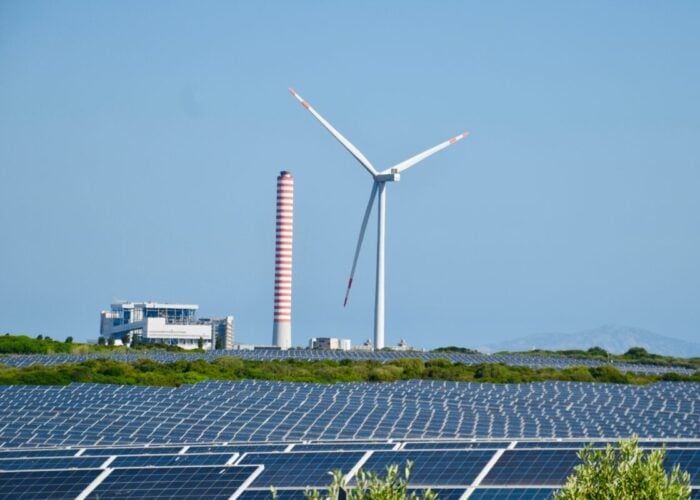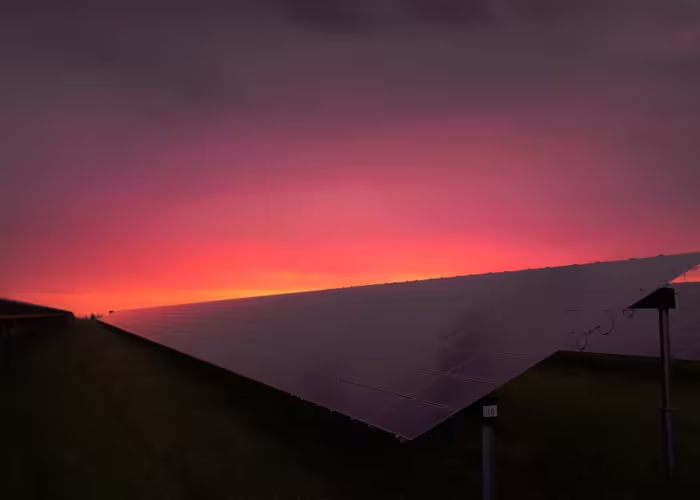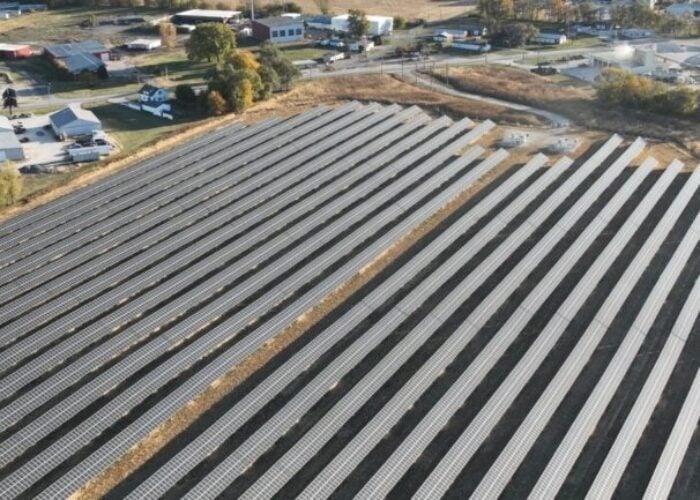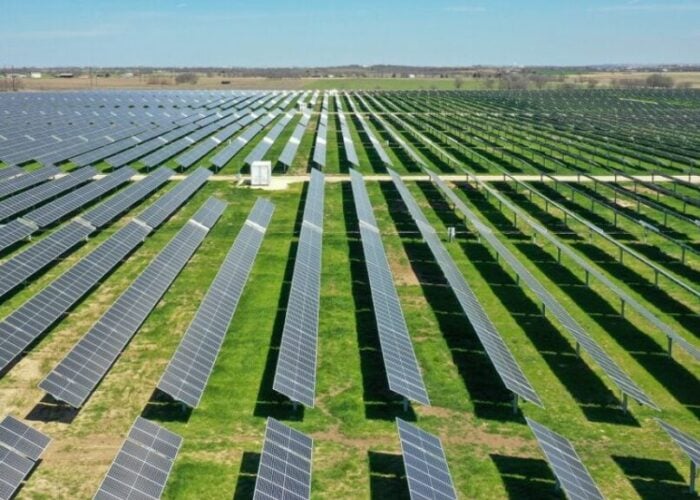The US is leading the charge for solar in North America, but its next-door neighbours, Canada and Mexico, are also pressing ahead with plans to boost deployment. Danielle Ola reports on the policy developments expected to underpin the growth of solar in the two countries, in a feature article which originally appeared in the seventh issue of PV Tech Power. To be emailed every issue of PV Tech Power first, and a host of other benefits, sign-up for a free PV Tech Essential membership today.
Try Premium for just $1
- Full premium access for the first month at only $1
- Converts to an annual rate after 30 days unless cancelled
- Cancel anytime during the trial period
Premium Benefits
- Expert industry analysis and interviews
- Digital access to PV Tech Power journal
- Exclusive event discounts
Or get the full Premium subscription right away
Or continue reading this article for free
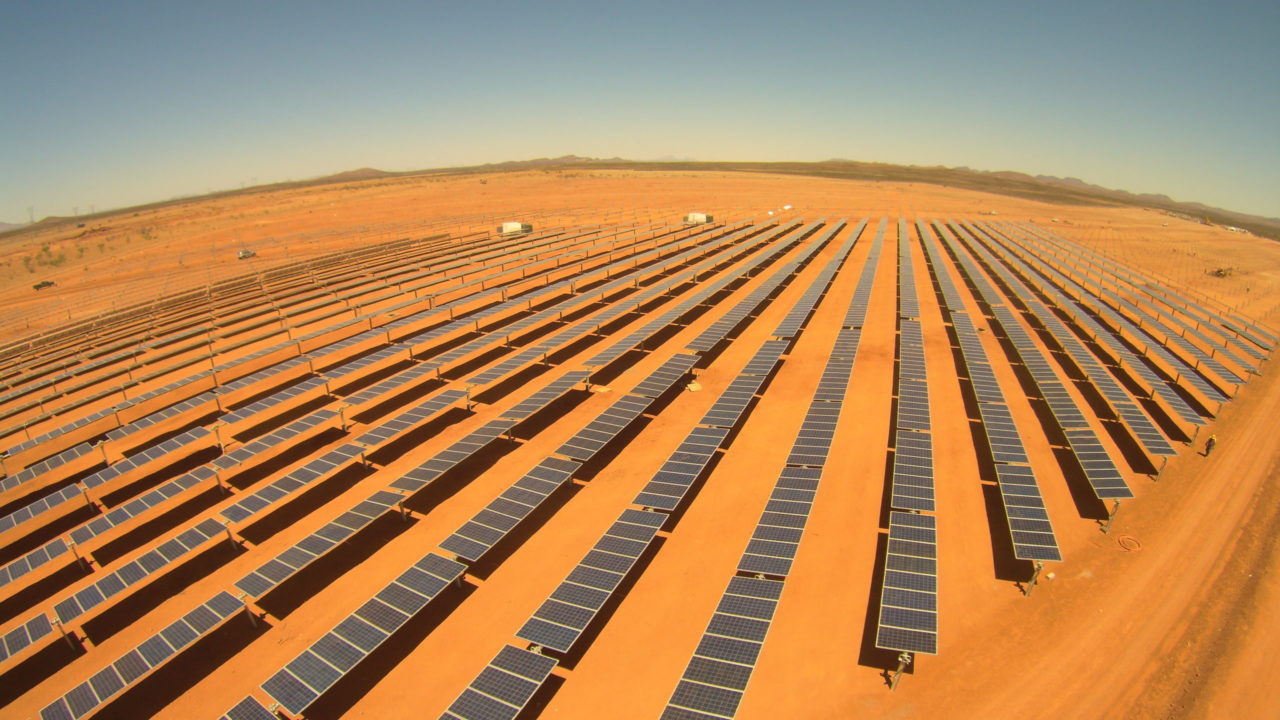
The US solar market is expanding at an exponential rate, thanks to a booming residential PV market and continued realisation of the utility sector’s double-digit gigawatt project pipeline. Recently celebrating one million solar installations nationwide, the US now boasts a total installed capacity of 27.4GW, enough to power 5.5 million homes. Its neighbouring North American counterparts, Canada and Mexico, have some way to go to catch up, with total installed capacity at over 2.5GW and 104MW, respectively.
In 2015, the US installed 7,260MV of solar PV. On a comparative development timeline, Mexico is currently in 2004 in terms of US installed capacity by that year. At that time in the US, the fastest growth in the country was the commercial PV market, but in Mexico, utility-scale solar is expected to take a front seat.
Both Canada and Mexico had been lacking in appropriate energy policies that could adequately serve their growing solar markets, and began to see significant industry growth once new renewable-friendly legislation was in place. For Mexico in particular, this also meant a framework that could cater to an emerging market.
“The turning point really was the energy transition,” says Mohit Anand, senior analyst at GTM Research, referring to a wave of regulatory reforms recently introduced in the country. “Prior to that, there wasn’t a policy that was suitable for an early stage market; especially in a developing country like Mexico because it didn’t give the kind of confidence that financiers need.”
The reforms have made the country, for the first time ever, a competitive market. “It really is liberalisation in the truest sense of the word,” says Anand. “Pre-liberalisation it was a fairly stuck-up, monolithic, monopoly-oriented market.”
Meanwhile, according to Patrick Bateman, director of market intelligence and research at the Canadian Solar Industries Association (CanSIA), despite Canada’s leading solar province, Ontario, surging ahead, the rest of the country has been slow to embrace PV. “The reason why Canada as a whole has been slower than the US is twofold: the first one is that electricity and resources are very much a provincial and territorial jurisdiction in Canada and we haven’t had a lot of federal leadership on those files over the last decade. The second reason I would say is that in the US they have excellent federal tax policy over the last decade that has really accelerated the solar industry there,” Bateman says.
Below we profile the two countries and look at the drivers as well as the remaining obstacles for their solar industries.
Canada
A lack of national-level policies
The unique constitutional fabric of Canada dictates that each jurisdiction has its own set of regulatory guidelines and processes. This poses a barrier for a streamlined approach to energy policy – despite it being a predicament that neighbouring America has clearly found surmountable, according to Dan Woynillowicz, policy director at Clean Energy Canada, a clean energy and climate policy think tank.
“Similar to the US, the bulk of jurisdiction and decision-making around electricity policy in Canada occurs at the provincial level and not the federal level,” Woynillowicz says. “A significant difference between Canada and the US is that in the US there has still been a lot of federal engagement to try to encourage development of solar energy; we really have not seen that in Canada.”
For the last 10 years, Canada has had a Conservative federal government that mostly wound down some of the existing programmes supporting renewable energy, which contrasts with the prominent support given to solar in the US, such as the US Department of Energy’s SunShot Initiative.
“[The US] has had more on the innovation and early deployment side of things,” adds Woynillowicz. “They’ve also had the solar investment tax credit (ITC) as well, which has played a significant role in encouraging solar in the US.”
New policy drivers for renewables
The new government under prime minister Justin Trudeau has made promises to shake off Canada’s reputation as a laggard on climate change, with designs for it to emerge an ‘energy superpower’ by fixing the country’s reputation as a carbon bully in international climate negotiations.
“The federal government has actually identified increasing the use of renewable electricity as a key piece of what needs to happen within the energy system to achieve the greenhouse gas reductions that they committed to in Paris,” says Woynillowicz.
These promises have as of yet to translate into legislation, but the government has embarked on a cooperative process with the provinces to develop a Climate Plan for Canada, which provides for fuel-switching and emissions regulations on coal-fired generators.
“In addition to making the tax treatment more favourable as with oil and gas, we’d like to see tax treatment become more competitive like that in the US,” says Bateman.
Examples of renewable energy policy have only been seen in dribs and drabs, highlighting the piecemeal policy framework of the country. For now, the future of clean energy rests on the cumulative effect of some of the other pieces, rather than any single overarching policy.
Ontario
“Generally speaking, when you speak of solar energy in Canada, it is really referring to solar energy in Ontario,” says Kevin Allan, vice president of sales and marketing for Grasshopper, Ontario’s largest residential solar company.
Today, the province has enhanced the competitiveness of solar by phasing out coal in its entirety – which is one of the most significant environmental actions in North America as a whole. It has installed well over 2,000MW of solar to date. Under its Long Term Energy Plan, Ontario expects clean energy to comprise half of all installed capacity by 2025.
Some industry analysts reconcile the pivotal turning point for Canada’s solar industry with the launch of Ontario’s Green Energy Act (GEA) in 2009. Just a year prior, there was 5MW of solar installed nationally, and in 2009 that increased tenfold and from that point forward there were several hundred megawatts installed every year. The GEA gave rise to Ontario’s feed-in tariff (FiT) programmes which really drove the first real wave of solar in the country.
The province has since switched from this approach to a competitive procurement process under the Large Renewable Procurement (LRP) programme. Under Phase I in March this year, 16 contracts totalling 455MW of renewable energy capacity were offered. Of those, seven were solar (139.85MW) at a weighted average price of US$156.67/MWh.
The next round of contracts will be bid for in summer 2016. A total of 930MW is on offer, with 250MW specifically allocated to solar.
Alberta
Meanwhile, the province of Alberta has recently unveiled a series of policies that could eventually see it emulate Ontario’s lead on solar. Last November the provincial government set a target to phase out coal by 2030 and effectively triple its share of electricity generated by renewables over the same period.
So far Alberta has only installed a lowly 9MW or so of PV, and the new policies so far contain no specific carve-out for solar. But CanSEIA believes under the province’s climate leadership programme, in which its ambitions are framed, solar could meet up to 15% of its power needs by 2030, resulting in up to 4,300MW of new capacity being installed in that time.
Already some large projects are beginning to come forward in the Alberta. In Vulcan County, EDF EN Canada is planning a 100MW project, which is set to be operational autumn 2018. Sucor, BluEarth Renewables and GTE Power are other names that are also proposing large solar farms. Between them, including the Vulcan farm, there are a total of eight separate projects that could produce up to 352MW of energy.
Saskatchewan & British Columbia
Southern Saskatchewan and southern Alberta have some of the best solar resource in Canada – approximately 1,500kWh/kWp installed, according to Bateman.
The province has committed to generating 50% of its power through renewables by 2030. That is approximately double what the province has – creating a huge opportunity for wind and solar and other renewables over the coming years.
It has also committed to initiating the procurement of 60MW of utility-scale solar starting this year. The impending outcome of these procurements will serve as a benchmark to determine what scale and pace the province moves forward with solar after that point.
British Columbia, on the other hand, is one of the provinces with a lot of hydro power, so whilst significant annual growth is expected, it will start from a very small base. “It’s an up-and-coming province for sure, but Saskatchewan and Alberta are going to be breaking the 100MW mark in the next few years, whereas British Columbia will be a slow burner,” says Bateman.
Obstacles for Canadian solar industry growth
A lack of overarching policy stimuli can be pinpointed as the main reason why solar has not taken off in Canada in the way it potentially could, alongside competition in a highly saturated energy market rich in hydro and amortised coal.
On the manufacturing side, Canada arguably lacks a lot of innovation support relative to the US or some European nations like Germany. Some industry experts go as far to say that the Canadian financial sector is nowhere near advanced enough in its understanding of electricity markets and how to manage and mitigate some of the opportunities and risks associated with them.
But with the pricing recently seen in Ontario’s competitive tender, Bateman believes others may sit up and take notice of what is possible with solar.
“I think that 2015 will be viewed as a turning point for the solar industry in Canada – with the price discovery from the LRP,” says Bateman. “Policy makers, regulatory and utilities will really begin to take a more serious look at solar than they have done in the past. I think that, combined with some of the new policies at the federal level, will really bring solar into the mainstream.”
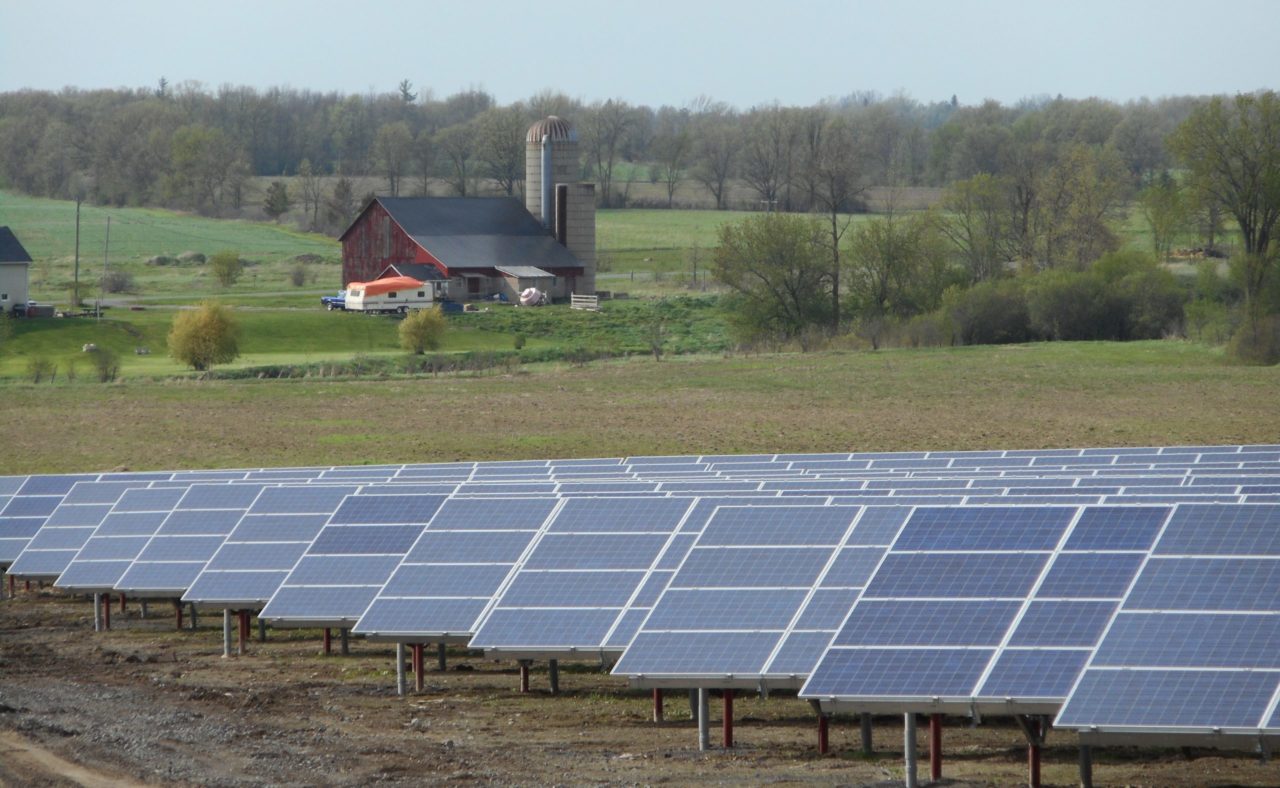
Mexico
A new regulatory framework
At first, Mexico’s new regulatory framework was met with cautious scepticism. Energy programmes had been in place for the last two to three years, with a renewable energy portfolio consisting of a combination of net-metering, self-supply schemes and small power producer schemes.
While sound in their own right, these power schemes did little to ignite Mexico’s solar industry. The energy reforms at the end of 2015 overhauled the state-owned electricity provider, Comisión Federal de Electricidad (CFE), and constructed a wholesale market from scratch to encourage competition through private-sector participation.
Through these reforms, Mexico’s young solar energy market finally had an adequate framework in which to grow. Under the energy transition there are now tenders with a fixed 15-year power purchase agreement (PPA) with CFE. The auctions provide opportunities for solar companies to also move into the clean energy certificate (CEL) market.
The new framework, though promising at its outset, was shrouded with uncertainty as solar developers and financiers alike were dealing with a wholly new set of rules. This was to be expected, especially with something as slow and large-scale as an energy infrastructure, where any significant regulatory changes will result in a lag in the financing and investment space. Financial institutions needed to take the necessary time to understand the new paradigm.
“Because of [those constraints], there was a period of lull in Mexico,” says Anand. “The pipeline in Mexico coming out of the previous paradigm was close to 7GW of solar projects whereas we were initially forecasting no more than about 400MW or 500MW for this year. That was emblematic of the fact that the industry was really grinding to a halt to take its time to understand the implications of solar changes in the new paradigm.”
Investor interest
But if the reception of the country’s first long-term energy power auction is anything to go by, it can be concluded that the new paradigm works, and is backed up by substantial investor confidence.
The overall volume of power awarded was 4,019GWh. Solar came out on top, securing 74% of the overall energy awarded, bagging 1,869MW at a rate of US$50.7 per MWh.
Enel Green Power (EGP) was the auction’s biggest winner, securing around almost 1GW of contracts. In fact, seven out of the 11 winners including EGP were key international PV companies: SunPower (509MW, including projects by subsidiary Vega Solar), Recurrent Energy (62MW), Vega Solar (740GWh), JinkoSolar (241MW), Photoemeris Sustenable (29MW) and Sol de Insurgentes (27MW).
The turnout was much higher than the Mexican government had anticipated; in total 227 bids were made by 69 participants. As a result, GTM Research predicts solar in Mexico to increase by 521% in 2016. Mexico has just announced its second tender, ensuring demand for the foreseeable future.
Moving forward, the PPA has been assessed to be bankable, with banks vetting it in the past. There was initial doubt over the viability of the PPA prices, given how they were some of the lowest prices globally.
GTM’s Anand characterised the aggressive pricing as an upside for solar: “That clearly shows that within the developer community there is room for squeezing margins to optimise the extent to which they can really make these projects viable.”
The auction was very much in the direction of utility-scale projects, with GTM forecasts for utility-share of the market at over 80%. At the same time, the distributed generation space is quite a healthy part of an emerging market like Mexico, at 15-20% of the energy mix. This however is dependent on net metering to make it viable, and as things stand, there is no explicit mandate for this yet.
The big unknown that remains is whether the implementation of the 3.4GW planned between January-March 2018 will happen in a timely manner.
“Will it be able to execute on time? Will it be able to execute in a manner that is financially attractive for the developers? What are those margins by the end of it for all of them? All of that will determine whether this whole kind of ‘rush’ is viable or not,” says Anand.
Things are heating up in Mexico already, with EGP confirming three PV projects almost immediately after its win, under a US$1 billion investment for the construction of the plants. In addition, Chinese PV giant Canadian Solar is developing a 63MW plant in Aguascalientes, which is scheduled to be connected to the grid in September 2018. JinkoSolar made its debut out of the Chinese market with three solar projects in Mexico, two in Yucatán and one in Jalisco, totalling 188MW.
“It is a good venture for JinkoSolar as Mexico is a new market,” says Asier Aya, project development director, Latin America, for JinkoSolar. “It is one of the larger markets on volume counts and also CFE is a very bankable up-taker. So the volume, and the fact that there is a stable PPA you can finance, and the prospect of several auctions in the next few years, made it one of the most attractive markets.”
As for the future, GTM predicts a cumulative 9.3GW between 2016 and 2020 and a compounded growth rate of 41%. In fact, if many of the potential trials in the market play out, on the upside, the market for 2020 could be as much as 4GW for that year alone.


